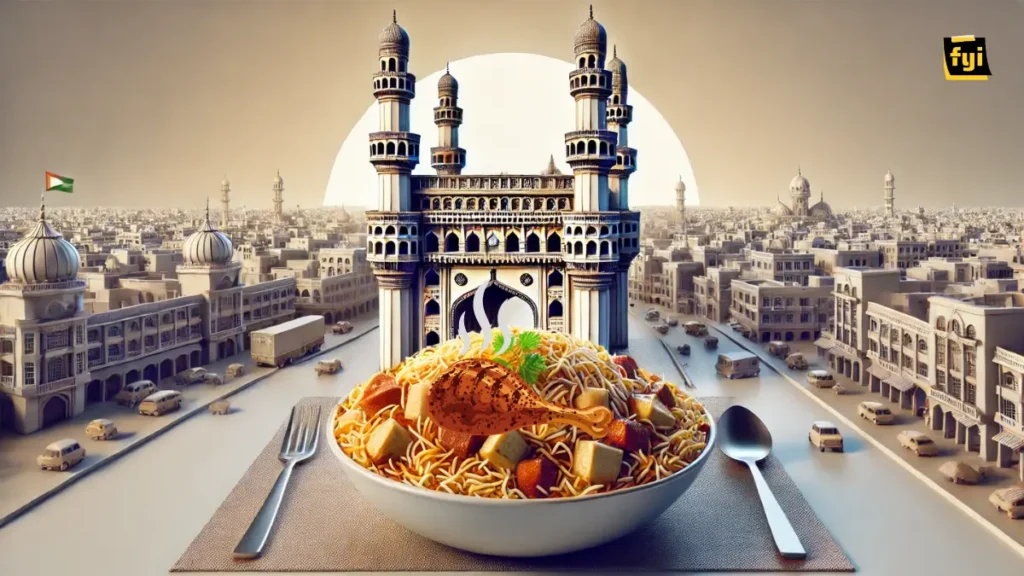Hyderabad Biryani is a legendary dish that has its roots in the rich history of the Indian subcontinent. The story of this beloved culinary delight is intertwined with the history of the city of Hyderabad itself, reflecting a blend of different cultural influences over centuries.
Origins:
The origins of biryani are widely debated, but it is generally believed to have been brought to India by Persian travelers and merchants. The word “biryani” is derived from the Persian word “birian,” which means “fried before cooking.” The dish was further developed and adapted in India, with various regional variations emerging over time.
Mughal Influence:
The biryani as we know it today was significantly influenced by the Mughal Empire, which ruled large parts of India from the early 16th to the mid-18th century. The Mughals were known for their lavish lifestyle and elaborate cuisine, which included richly spiced and aromatic dishes. Biryani became a staple in the Mughal kitchens, combining fragrant rice with meat and a blend of spices.
Nizams of Hyderabad:
The most notable chapter in the history of Hyderabad Biryani begins with the Asaf Jahi dynasty, the Nizams of Hyderabad. The Nizams, who ruled Hyderabad from the early 18th century until 1948, were great patrons of art, culture, and cuisine. Under their patronage, Hyderabad Biryani evolved into a culinary masterpiece.

The Nizams’ chefs, who were masters of Persian, Turkish, and Mughal culinary traditions, combined these influences with local Andhra and Telangana flavors to create the distinct Hyderabadi Biryani. The dish was perfected in the royal kitchens, where chefs experimented with various ingredients and cooking techniques.
Two Styles:
Hyderabad Biryani is unique in that it comes in two main styles: Kacchi (raw) Biryani and Pakki (cooked) Biryani.
- Kacchi Biryani: In this version, raw marinated meat is layered with partially cooked rice and then cooked together in a sealed pot (dum cooking) until the meat is tender and the rice is fully cooked. This method requires precise control of temperature and cooking time to ensure that the meat cooks perfectly without overcooking the rice.
- Pakki Biryani: In this version, the meat and rice are cooked separately before being layered together and given a final dum. This method allows for more control over the individual components but still requires the skillful blending of flavors during the final cooking stage.
Cultural Significance:
Hyderabad Biryani is more than just a dish; it is a symbol of the city’s cultural heritage and culinary excellence. It is a staple at weddings, festivals, and special occasions, often being the centerpiece of grand feasts. The dish represents the fusion of different culinary traditions and the rich history of Hyderabad.
Modern Day:
Today, Hyderabad Biryani is famous worldwide, with numerous restaurants and chefs offering their own variations. Despite the variations, the essence of the dish remains the same: a perfect blend of aromatic rice, succulent meat, and a rich array of spices, all cooked to perfection.




WOW